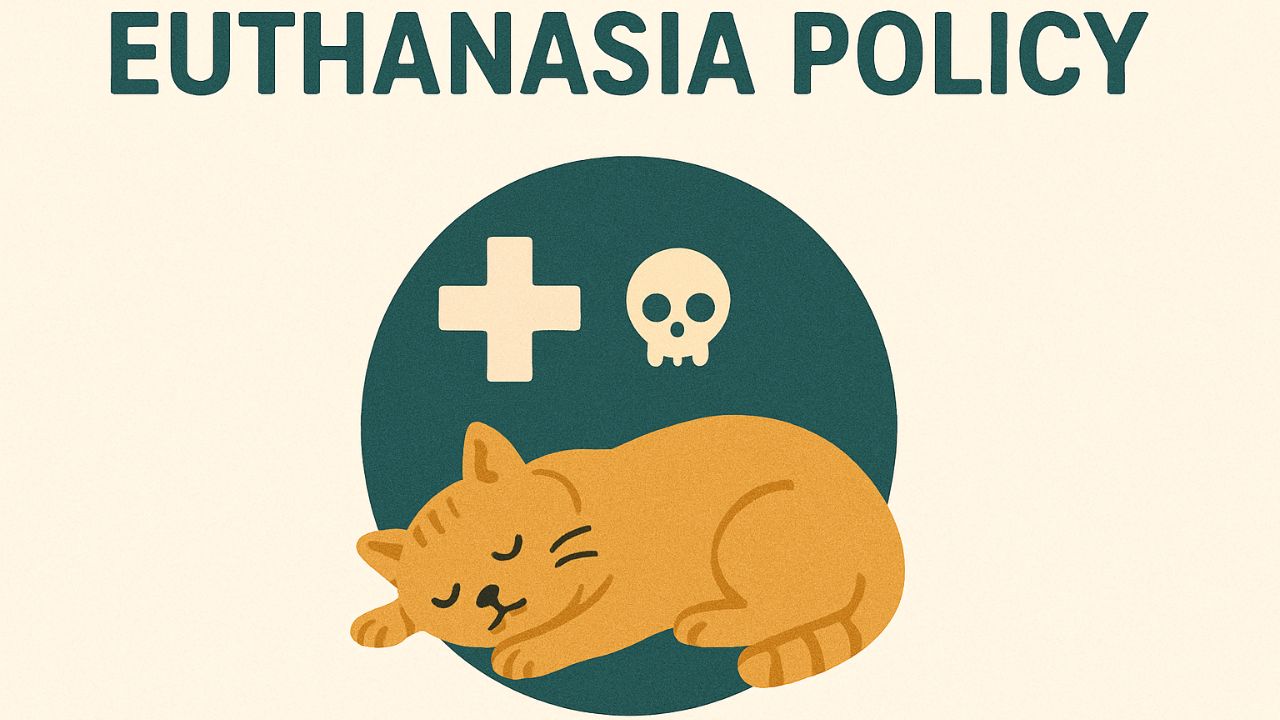Euthanasia Policy

Open-admission shelters, what all shelters used to be, accept all animals regardless of their age, temperament, medical condition, background, or space availability at the shelter. The purpose of open-admission shelters is to help all animals in need, whether owner-surrendered, stray or abandoned. Sadly, this often requires euthanizing large numbers of animals and reflects the reality and seriousness of the over-population of homeless animals.
Limited-admission or “no-kill” shelters limit their intake of animals to only those they deem “adoptable” and for which they have space to house. This results in turning many animals away when they have reached capacity. Their reasons for euthanizing vary and range from not euthanizing any animals or euthanizing aggressive or sick animals while not euthanizing healthy and “adoptable” animals. The term “adoptable” is subjective and varies widely between shelters. In theory, to be identified as a “no-kill” shelter, one must have a “live-release” rate of 90% or greater. To reach this goal, intake of animals must be limited to those that the shelter has space to house and they think can either be adopted into homes, placed in foster care, or released back outdoors with possibly no guardian. These shelters do not euthanize feral cats but rather participate in trap-neuter-release programs where the cats will die outdoors via attrition.
A “no-kill” agenda is required to obtain grants from foundations that fund only “no-kill” shelters and it appeals to potential donors who might not be aware of the consequences of such practices.
We are often asked if we are a “no-kill” shelter. We respond that we are an open-admission shelter. The term “no-kill” has no specific definition and can mean different outcomes across shelters. We explain to people that to denounce euthanasia in order to abide by a “no-kill” ideology means ignoring the multitude of homeless animals that are abandoned, tossed aside, neglected or abused. Ceasing the practice of euthanasia in shelters is not a solution but rather an denial of the problem. Something has to happen to the millions of animals for which responsible homes will never be found. In lieu of euthanasia animals will either be subjected to a lifetime of cage confinement, trapped in a hoarding situation in substandard conditions, abandoned by the side of the road, in parking lots, on back roads or left behind when a tenant moves, given away to anybody who will take them via social media postings, poisoned, shot or killed in any manner of brutal ways. Animals, especially cats, that have no home or shelter refuge usually have a shortened life of pain and suffering and die out of sight of the general public.
The public gets frustrated and upset when they are unable to find a shelter to take cats they need to surrender, or a stray they find, or a feral cat that had kittens beneath their porch. We explain that it is unrealistic to support “no-kill” shelters while expecting them to be available to take in all homeless animals. There is simply not enough room or resources to house them all or to even begin to find homes for them all. Many are feral, aggressive or ill and are not even candidates for adoption. “No-kill” shelters often discourage people from bringing cats to them by having lengthy waiting lists or charging high surrender fees.
While our shelter does everything it possibly can to humanely care for and find loving homes for the many cats that come to us, we refuse to give in to the feel-good mantra of “no-kill” while turning a blind eye to the suffering and unkind death that ultimately results. “No-kill” exchanges a kind and witnessed euthanasia of unwanted animals for a cruel and unwitnessed death by any other means.
